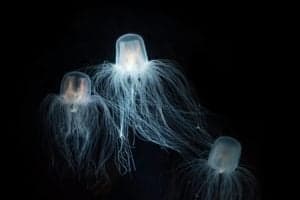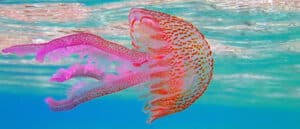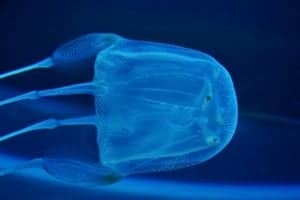
Jellyfish are incredibly unique creatures that have been the focus of scientific curiosity for hundreds of years. Based on recent discoveries in the fossil record, it has been determined that jellyfish have existed on Earth as far back as 500 million years. Today there are over 2,000 recognized species of jellyfish that inhabit every ocean of the world; however, scientists speculate that there are thousands of species yet to be discovered.
Not only are jellyfish an incredibly diverse group of animals, but they can also have an incredibly long lifespan. The Turritopsis dohrnii jellyfish, also known as the immortal jellyfish, is capable of repeatedly reverting to a younger stage of life after it has reached adulthood when it is injured or is otherwise threatened. Scientists claim that in ideal conditions, this 4.5-millimeter jellyfish could live indefinitely.
Jellyfish are well known for their bright colors, long tentacles, and sometimes painful stings. They come in a diverse range of colors including blue, pink, purple, yellow, and orange. Many are translucent and some, like the crystal jellyfish, have a unique trait called bioluminescence allowing them to glow in the dark. Although jellyfish are beautiful in nature, many can be venomous and lethal.
The Australian box jelly, also known as the “sea wasp”, is widely regarded as one of the deadliest creatures on the planet and, along with other box jellies, is responsible for at least 5,568 deaths since 1954.
From red to blue, harmless to lethal, and microscopic to humongous, jellyfish come in all different shapes and sizes and are some of the most fascinating creatures on the planet. This article explores a few of these amazing animals. Here are the top nine biggest jellyfish based on maximum bell diameter (the “head” of the jellyfish).
#9 Atlantic Sea Nettle – 10-inch Diameter
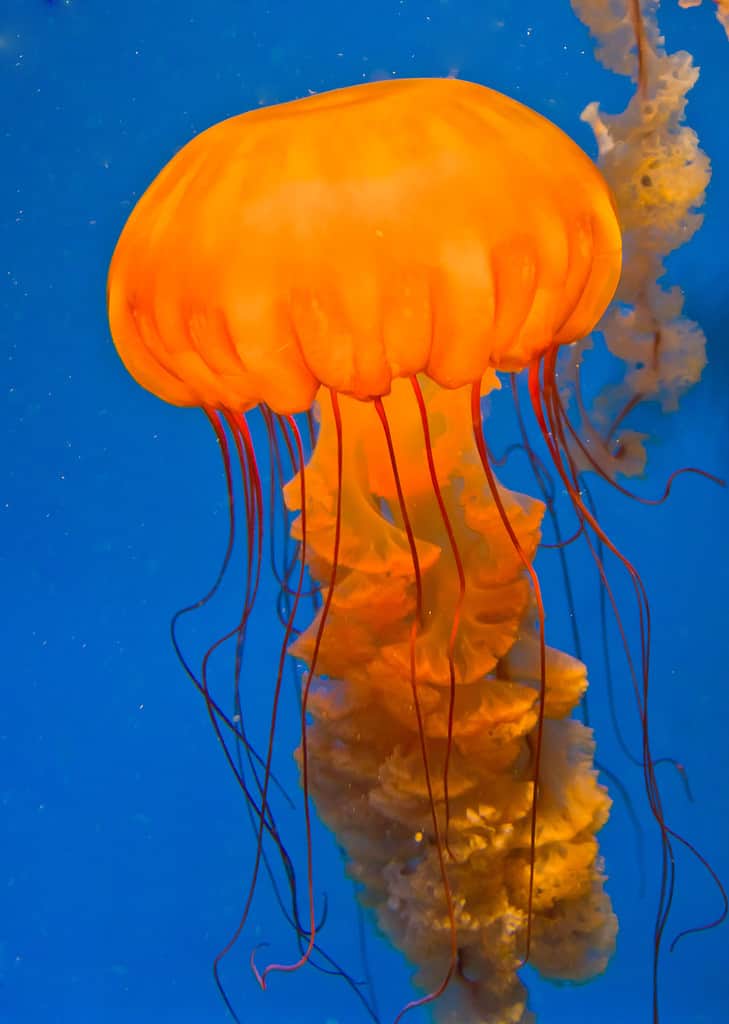
©Antoine Taveneaux, CC BY-SA 3.0 <https://creativecommons.org/licenses/by-sa/3.0>, via Wikimedia Commons – License
The Atlantic sea nettle jellyfish can have a bell diameter of up to 10 inches and tentacles that can reach 1 foot 7 inches long. This jellyfish is found in the Atlantic and Indian oceans where it is preyed upon by sea turtles, ocean sunfish, and larger jellyfish.
The Atlantic sea nettle also has an interesting symbiotic relationship with blue crabs where the jellyfish provides the blue crab with food and shelter and the blue crab removes parasites and debris from the jellyfish.
The sting from an Atlantic sea nettle can cause moderate discomfort, but it is not lethal to humans.
#8 Australian Box Jellyfish – 19-inch Diameter
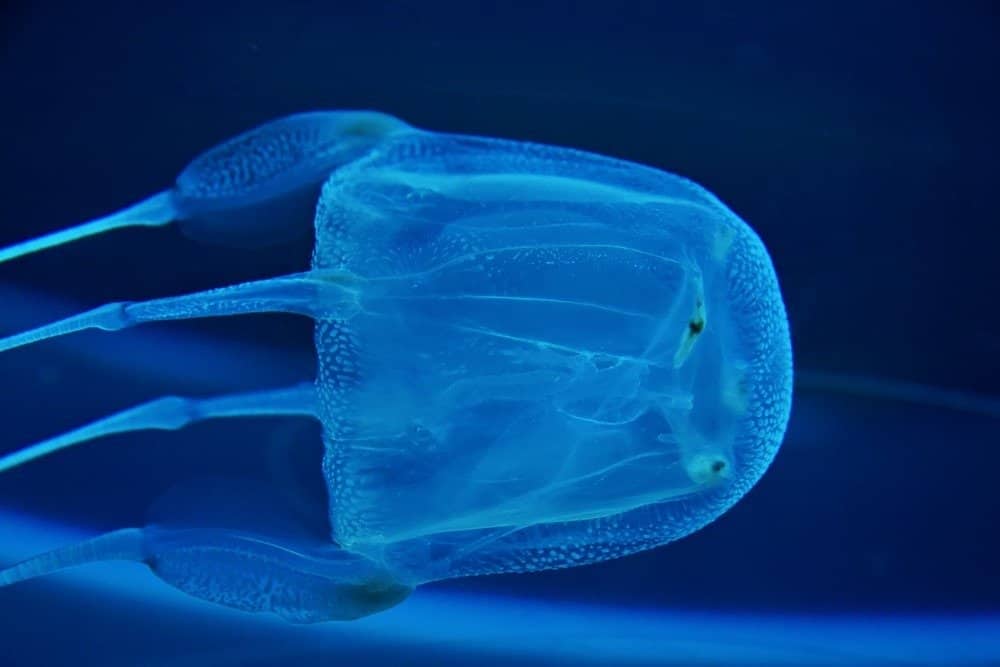
©Daleen Loest/Shutterstock.com
The largest recorded bell size of an Australian box jellyfish is 19 inches in diameter, however, on average their bells are 6-9 inches with tentacles up to 10 feet long. The Australian box jellyfish is nicknamed “sea wasp” because of its barbed tentacles that are incredibly venomous.
It is regarded as one of the deadliest animals on the planet and with one sting can cause paralysis, cardiac arrest, and death in under three minutes. The first person to survive a box jellyfish sting was a 10-year-old Australian girl in 2010.
#7 Tiburonia granrojo – 2-foot 6-inch Diameter

©NOAA/Monterey Bay Aquarium Research Institute, Public domain, via Wikimedia Commons – License
Tiburonia granrojo, colloquially known as “big red” jellyfish, is a deep-sea invertebrate that can have a bell diameter of up to 2 feet 6 inches. This jellyfish lives at depths 2000-4800 feet below sea level and is found off the coasts of Japan, Hawaii, Baja California, and western North America.
The big red jellyfish does not have stinging tentacles but has four to seven thick arms that are used to capture prey.
The earliest sighting of a Tiburonia granrojo was in 1993 and like many deep-sea creatures, much is still unknown. What is known about big red jellyfish primarily comes from data and pictures collected using a remote-controlled submarine deep in the ocean.
#6 Black Sea Nettle – 3-foot Diameter

A group of black sea nettle jellyfish
©Ken Wolter/Shutterstock.com
Black sea nettle jellyfish can have a bell size of up to 3 feet in diameter and can have tentacles up to 25 feet long. This jellyfish is rarely observed in nature and was not officially classified as a species until 1997. The black sea nettle when sighted is often seen with the Pacific butterfish.
The Pacific butterfish feeds on plankton collected by the jellyfish and hides in its large bell to avoid predators. Stings from this jellyfish can be painful but are not lethal to humans.
#5 Pink Meanie – 3-foot Diameter
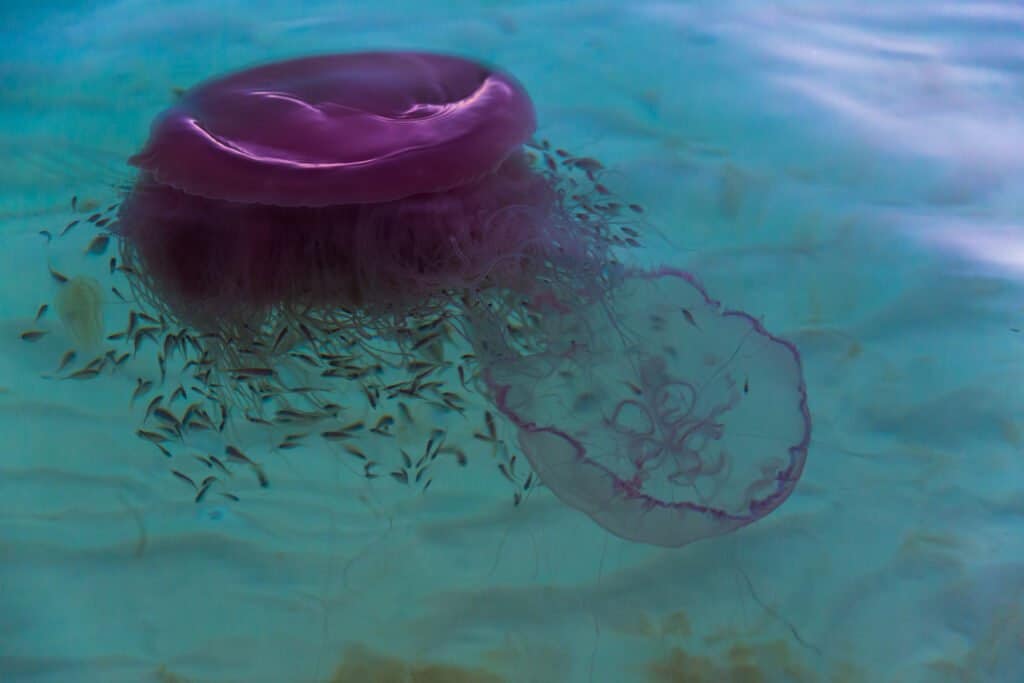
©iStock.com/olya_steckel
The largest confirmed pink meanie jellyfish was sighted in the Gulf of Mexico and had a bell diameter of about three feet. Some unconfirmed anecdotal accounts have reported diameters up to 5 feet. These jellyfish can have stinging tentacles as long as 70 feet and have been documented entangling and consuming 34 smaller jellyfish at a time.
Due to the rarity of the pink meanie jellyfish, it was not officially classified as a new species until 2014. This jellyfish can cause a painful sting, but it is not lethal.
#4 Stygiomedusa gigantea – 4-foot 7-inch Diameter

©Larson. R / Marine Structural Integrity Programs, FAL, via Wikimedia Commons – License
Stygiomedusa gigantea is a deep-sea jellyfish that can have a bell diameter of up to 4 feet 7 inches. Rather than tentacles, this jellyfish has four arms that can reach 32 feet long. It is hypothesized that these arms are used to grab and trap prey rather than sting them.
Despite having been seen in the wild only 118 times in the past 110 years, Stygiomedusa gigantea is thought to be widespread in the deep ocean and is one of the largest invertebrate predators of that ecosystem.
#3 Barrel Jellyfish – 4-foot 11-inch Diameter
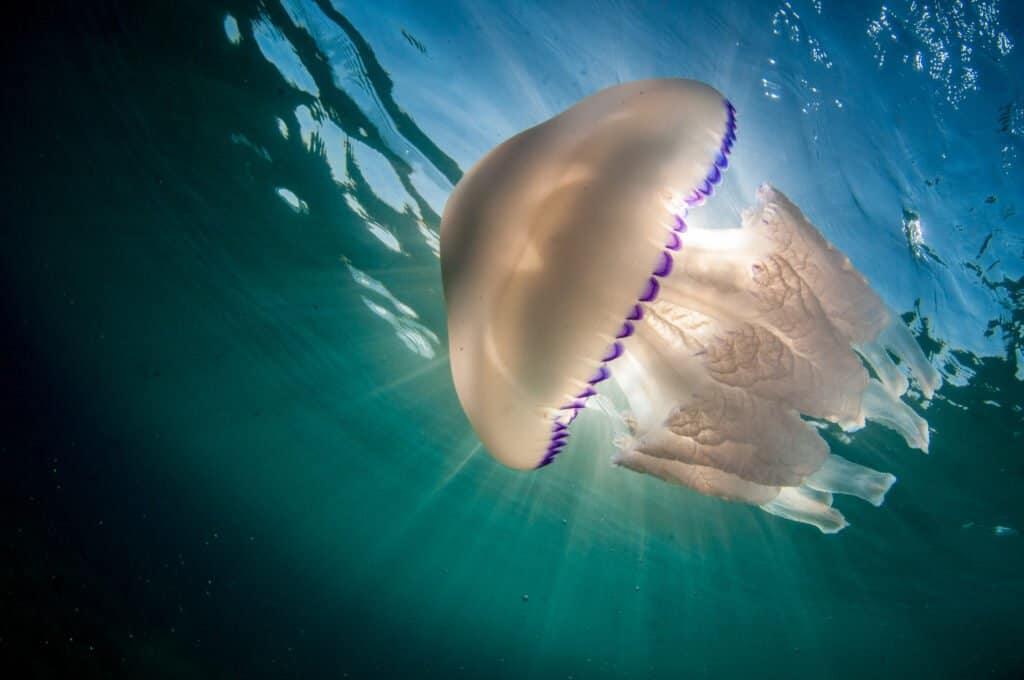
©iStock.com/Lophius
Barrel jellyfish can grow as large as 4 feet and 11 inches in diameter and are the largest jellyfish in the United Kingdom. On average, barrel jellies are 16 inches in diameter and about 3 feet in length.
They have a large geographic distribution, however, they are most common in the Irish Sea and off the southern and western coasts of Britain. Barrel jellyfish stings are typically not harmful to humans.
#2 Nomura’s Jellyfish – 6-foot 7-inch Diameter
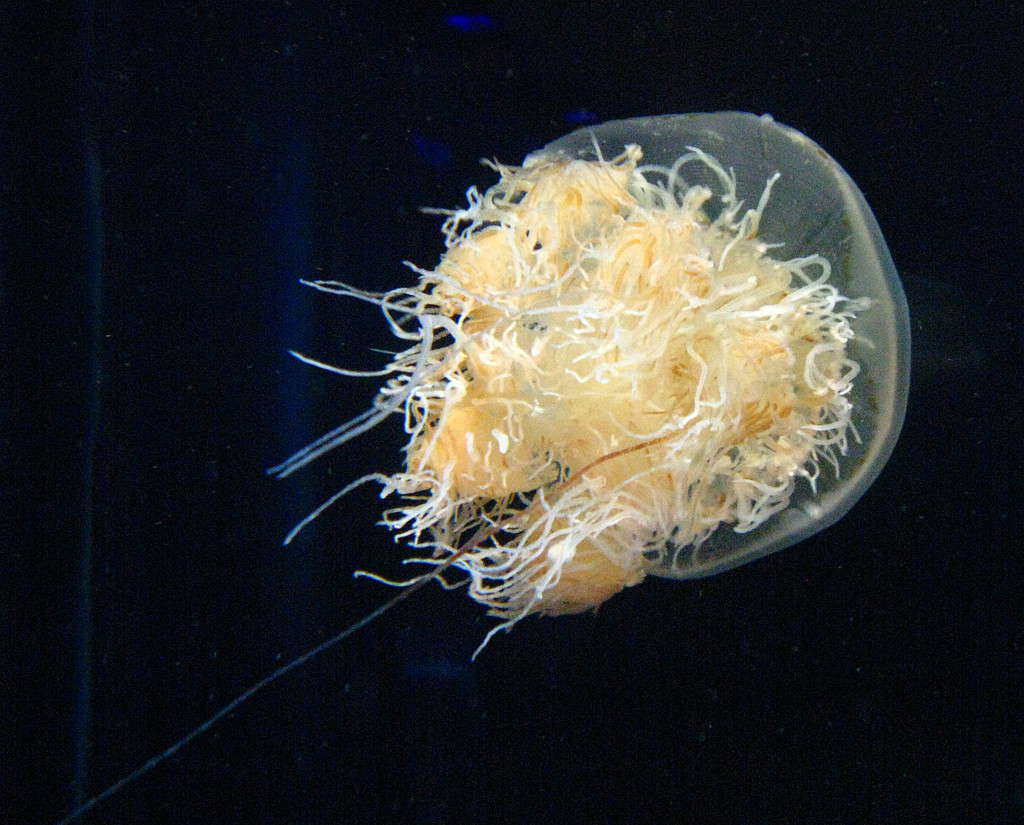
©I, KENPEI, CC BY-SA 3.0, via Wikimedia Commons – License
Nomura’s jellyfish are found in the Yellow Sea and East China Sea and have a maximum bell size of 6 feet 7 inches. They are in the same size class as lion’s mane jellyfish and can weigh up to 440 pounds.
In severe cases, stings from this jellyfish can be lethal and if not properly prepared, eating a Nomura’s jellyfish can be lethal as well. In Japan, on rare occasions, these jellyfish are used in vanilla jellyfish ice cream.
#1 Lion’s Mane Jellyfish – 7-foot Diameter
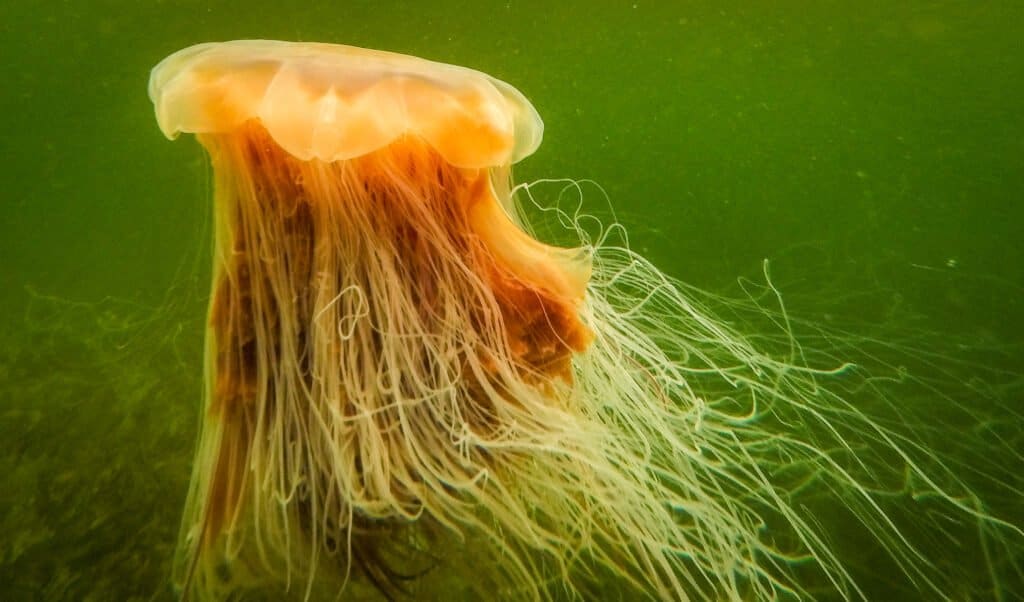
©Sunart Media/Shutterstock.com
The Lion’s mane jellyfish is the biggest jellyfish in the world. The largest specimen ever reported was sighted in 1865 off the coast of Massachusetts. This jellyfish was approximately 7 feet in diameter and had 120-foot-long tentacles.
The size of lion’s mane jellies varies greatly depending on geography with northern populations reaching up to 7 feet and populations at lower latitudes averaging 20 inches in diameter. These jellyfish are typically found in the Arctic Ocean, northern Atlantic, northern Pacific, the English Channel, and the Irish Sea. Despite their intimidating size, lion’s mane jellyfish stings are rarely fatal.
Summary Of The World’s 9 Largest Jellyfish
| Rank | Jellyfish | Diameter |
|---|---|---|
| 9 | Atlantic Sea Nettle | 10-inch Diameter |
| 8 | Australian Box Jellyfish | 19-inch Diameter |
| 7 | Tiburonia granrojo | 2-foot 6-inch Diameter |
| 6 | Black Sea Nettle | 3-foot Diameter |
| 5 | Pink Meanie | 3-foot Diameter |
| 4 | Stygiomedusa gigantea | 4-foot 7-inch Diameter |
| 3 | Barrel Jellyfish | 4-foot 11-inch Diameter |
| 2 | Nomura’s Jellyfish | 6-foot 7-inch Diameter |
| 1 | Lion’s Mane | 7 foot Diameter |
What is the World’s Deadliest Jellyfish?
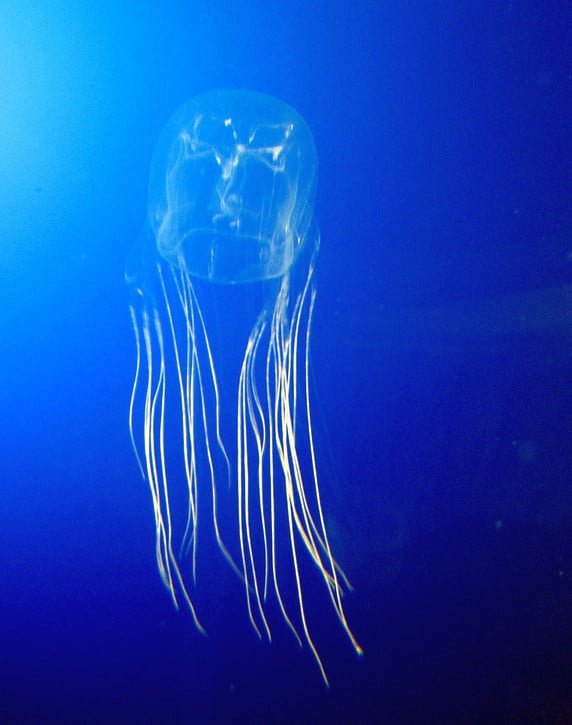
If injected with the lethal toxin of the Australian box jellyfish, you may experience cardiac arrest, paralysis, and even death in just a matter of minutes.
©Avispa marina.jpg: Guido Gautsch, Toyota, Japanderivative work: Mithril, CC BY-SA 2.0 – License
The most deadly jellyfish in the world is the Australian box jellyfish (Chironex fleckeri). This species of extremely venomous box jellyfish, nicknamed the sea wasp jellyfish, is found in coastal waters from northern Australia and the Indo-Pacific region, primarily in countries like New Guinea and the Philippines. The largest of the box jellyfish, reaching sizes of up to one foot in diameter, they are considered one of the most venomous marine mammals, and if injected with its lethal toxin, in a matter of minutes you may experience cardiac arrest, paralysis, and even death.
With tentacles that can reach up to 10 feet long, their ability to swim, often at speeds of up to 4.5 miles per hour, sets them apart from other jellyfish that mostly float on the current. These deadly gelatinous creatures also have the ability to see, which some researchers believe makes them capable of actively hunting their prey.
The photo featured at the top of this post is © Chai Seamaker/Shutterstock.com
Thank you for reading! Have some feedback for us? Contact the AZ Animals editorial team.



